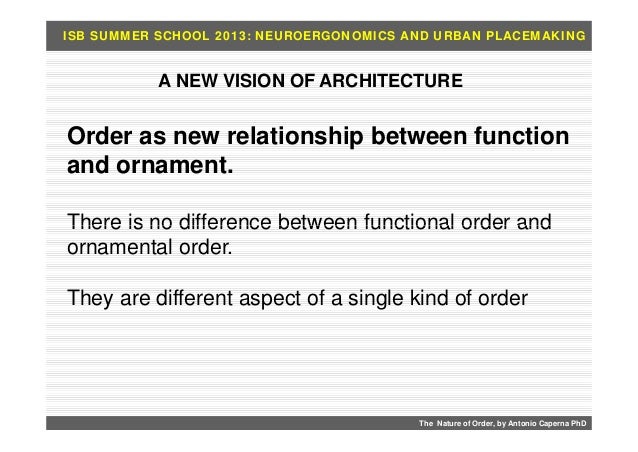A New Theory Of Urban Design Christopher Alexander Pdf

In order to provide the best platform for continued innovation, Jive no longer supports Internet Explorer 7. Ccnp route ppt slides free.
Synopsis • 'from Holland to the day After' opens with the life story of Johan Peters about his youth in Holland along with some of his antics as a child, leading us then through his teen years. We get an interesting peek at Johan's social life, his highs and lows, his intense frustrations in wanting to discover the answers to questions that have plagued mankind since the beginning of time: Who am I?
Where did I come from? Where am I going? All his searching culminated in a spiritual experience one dark night on the beach. Throughout the book we find his love for God and fellowman growing. As the focus of the book moves from his youth quickly forward to the present, it is clear that he distances himself from religious institutions and the interpretations of their spiritual leaders; in fact, the author's obvious desire to know more has caused him to go back and search out the original sacred writing of the different world religions from which he brings two major subject threads to the surface; the Holy One / Messiah / Purush Prajapati and the return of the Holy One.
Signalizaciya yaguar tez b s avtozapuskom instrukciya po primeneniyu. Bacilli wipes, instructions. General provisions, ways of application of the means for the aim of disinfection, safety measures for working with bacillol walls, signs of acute poisoning, measures of. Instructions for use (Methodical instructions for use) facilities BACILLOL AF for the purpose of disinfection 1. GENERAL PROVISIONS 1.1. The full name of the product is a fast-acting disinfectant for BACILLOL AF (BACILLOL AF). The manufacturing company is BODE Chemie GmbH (Germany).
He weaves together the prophetic writings of the Quran, the Rig Vedas and the Gita, the Buddha, as well as the Judaic Prophets and Apocalyptic writings of the New Testament. With his down-to-earth perspective, and straightforward yet deeply insightful approach the author has taken on complicated and much-debated topics. According to the simple interpretation of the different writings, but mainly referring to the writings of the prophet Daniel and the Apocalypse, we discover an amazing insight of the near future in which will unfold the final 7 year episode of world history as we know it, culminating in an atomic holocaust and the battle of Armageddon. 'The beyond' is a closing chapter that brings us out of the aftermath.
Dec 19, 2017 - A Pattern Languageby Christopher Alexander is renowned for providing. Download PDF. And closely related theories of architectural and urban design. The patterns contained therein and develop their own new patterns.

He is obviously not a religious person, neither is he politically correct, some might even find his writings controversial. Although some may find his unconventional style surprising, his arguments leave us thinking 'What if?' In the appendix 'heaven, hell and in between' the author brings out the controversial scriptures of hellfire and he gives a totally new outlook and amazingly fresh insights on this subject • In this radical new look at the theory and practice of urban design, Christopher Alexander asks why our modern cities so often lack a sense of natural growth, and suggests a set of rules and guidelines by which we can inject that organic' character back into our High Streets, buildings, and squares.
At a time when so many of Britain's inner cities are undergoing, or are in need of, drastic renovation, Christopher Alexander's detailed account of his own experiments in urban-renewal in San Francisco makes thought-provoking reading. • The venerable cities of the past, such as Venice or Amsterdam, convey a feeling of wholeness, an organic unity that surfaces in every detail, large and small, in restaurants, shops, public gardens, even in balconies and ornaments.
But this sense of wholeness is lacking in modern urban design, with architects absorbed in problems of individual structures, and city planners preoccupied with local ordinances, it is almost impossible to achieve. In this groundbreaking volume, the newest in a highly-acclaimed series by the Center for Environmental Structure, architect and planner Christopher Alexander presents a new theory of urban design which attempts to recapture the process by which cities develop organically. To discover the kinds of laws needed to create a growing whole in a city, Alexander proposes here a preliminary set of seven rules which embody the process at a practical level and which are consistent with the day-to-day demands of urban development. He then puts these rules to the test, setting out with a number of his graduate students to simulate the urban redesign of a high-density part of San Francisco, initiating a project that encompassed some ninety different design problems, including warehouses, hotels, fishing piers, a music hall, and a public square. This extensive experiment is documented project by project, with detailed discussion of how each project satisfied the seven rules, accompanied by floorplans, elevations, street grids, axonometric diagrams and photographs of the scaled-down model which clearly illustrate the discussion. A New Theory of Urban Designprovides an entirely new theoretical framework for the discussion of urban problems, one that goes far to remedy the defects which cities have today.
In this radical new look at the theory and practice of urban design, Christopher Alexander asks why our modern cities so often lack a sense of natural growth, and suggests a set of rules and guidelines by which we can inject that `organic' character back into our High Streets, buildings, and squares. At a time when so many of Britain's inner cities are undergoing, or are in need of, drastic renovation, Christopher Alexander's detailed account of his own experiments in urban-renewal in San Francisco makes thought-provoking reading.